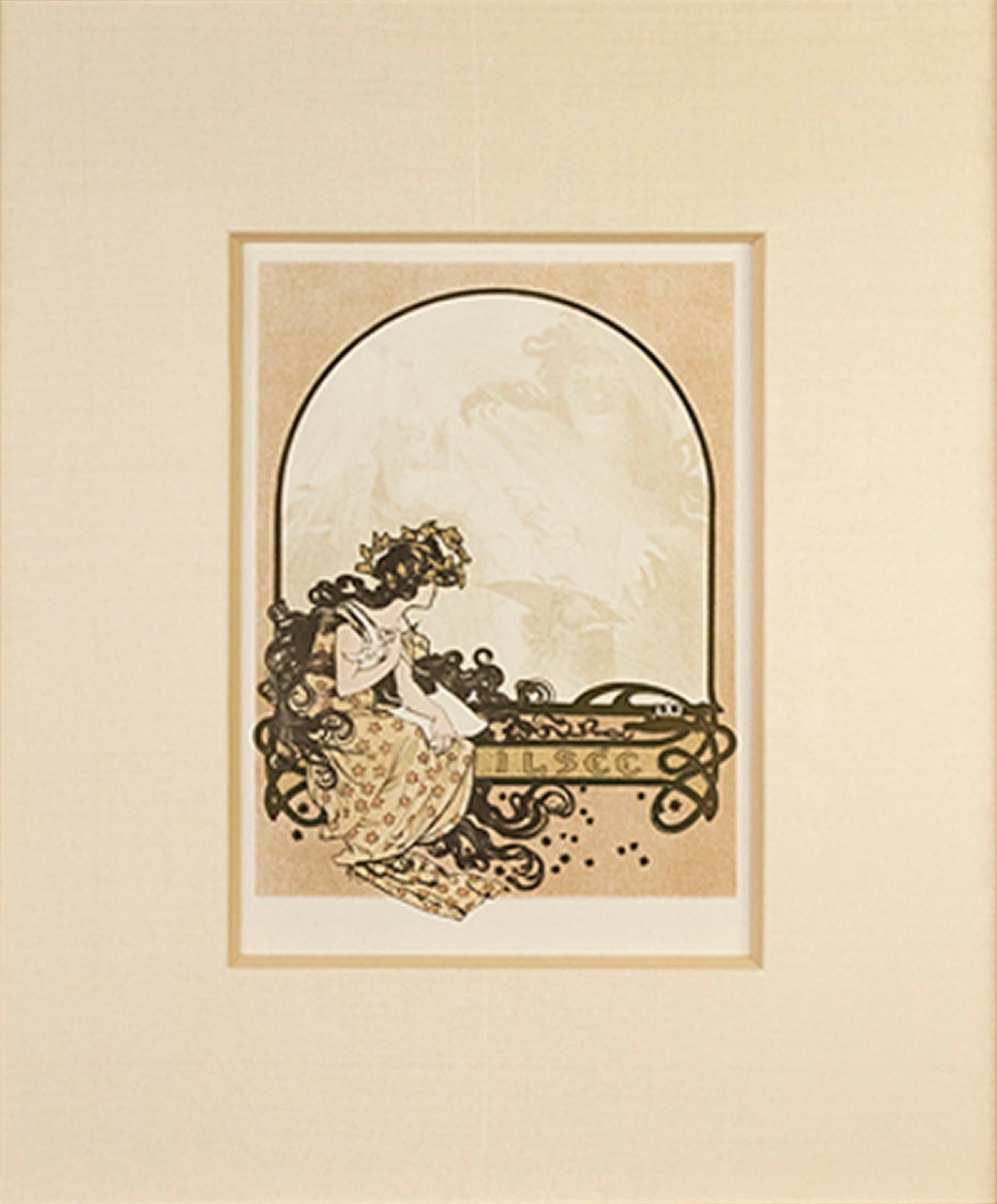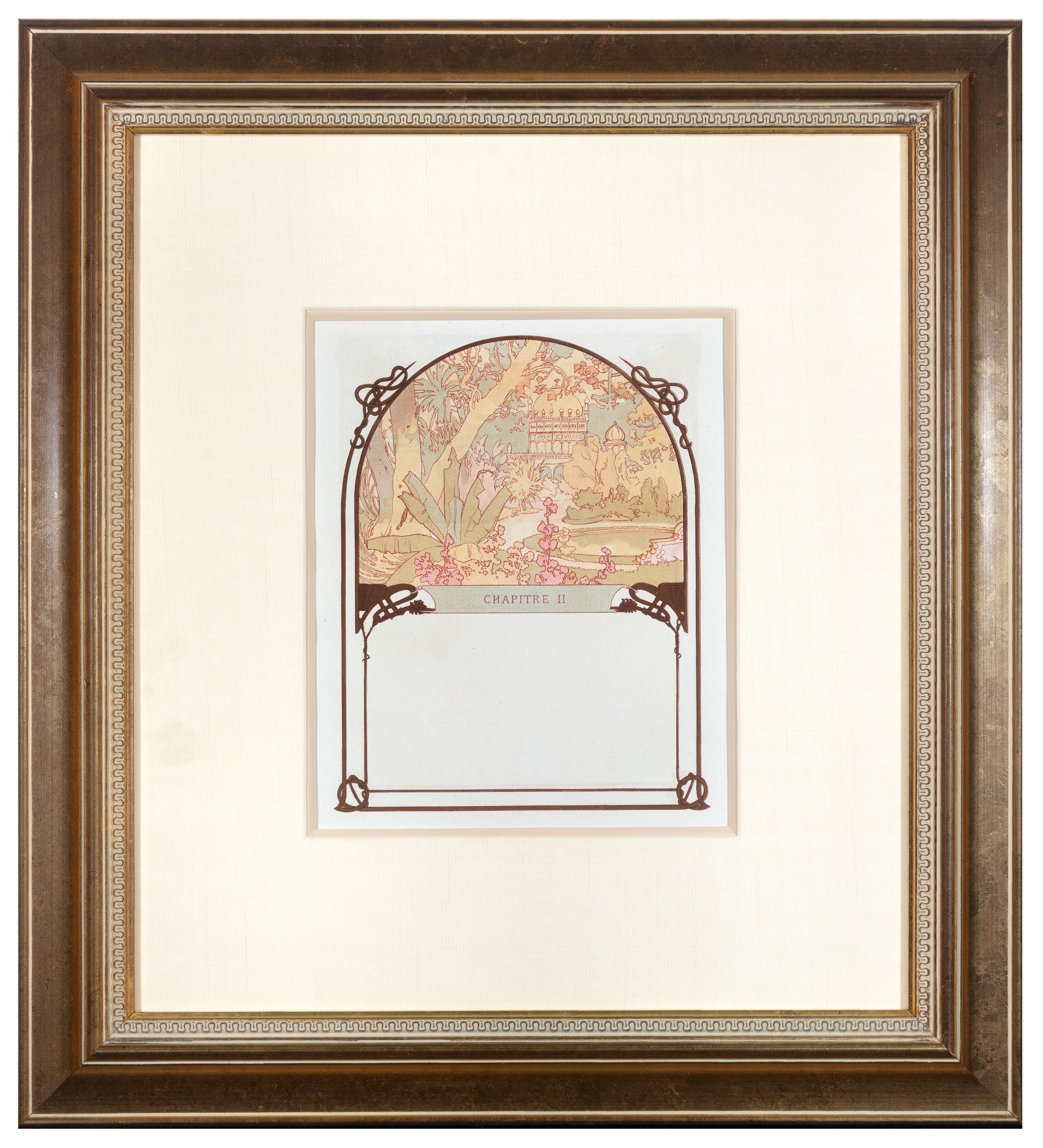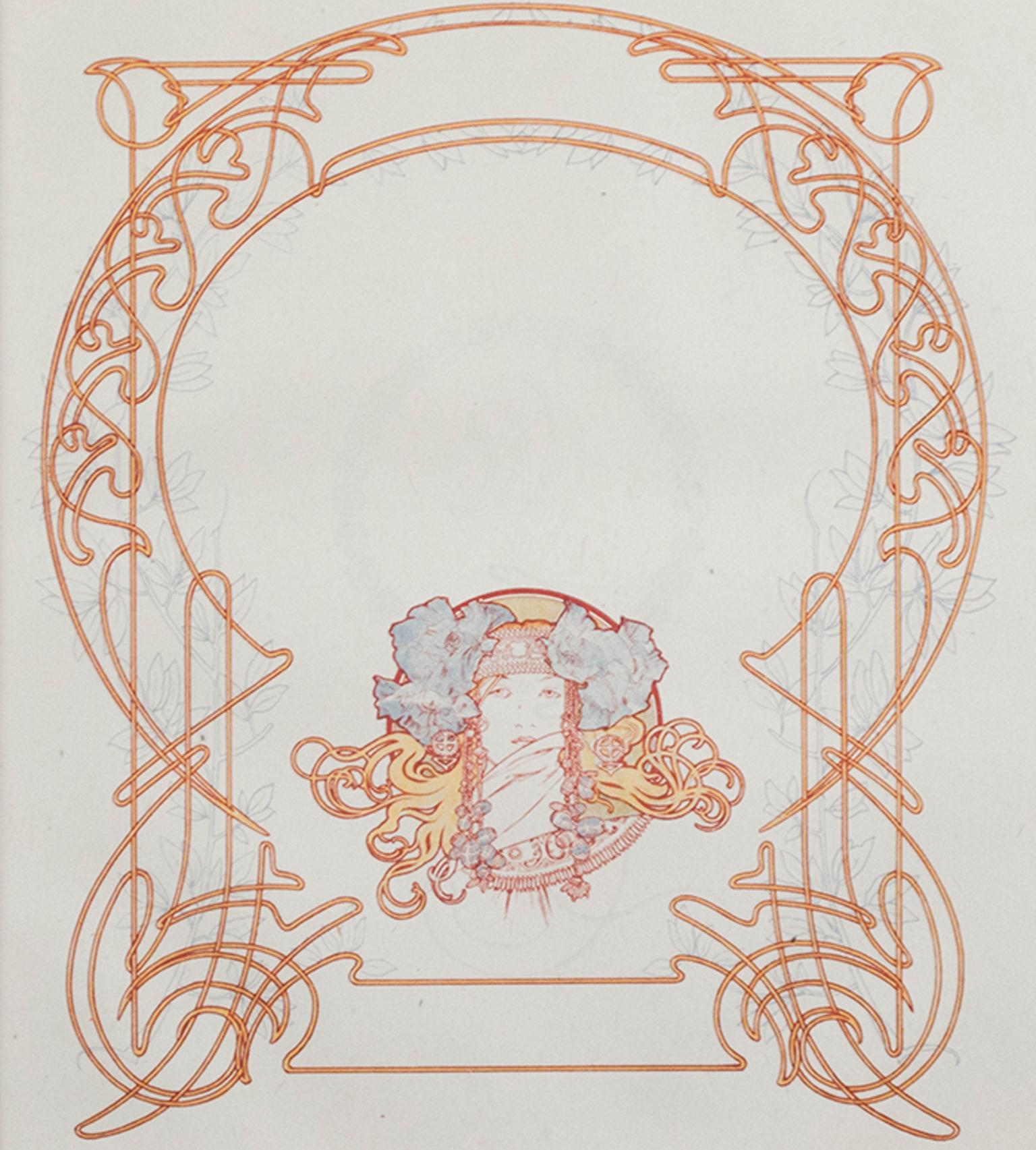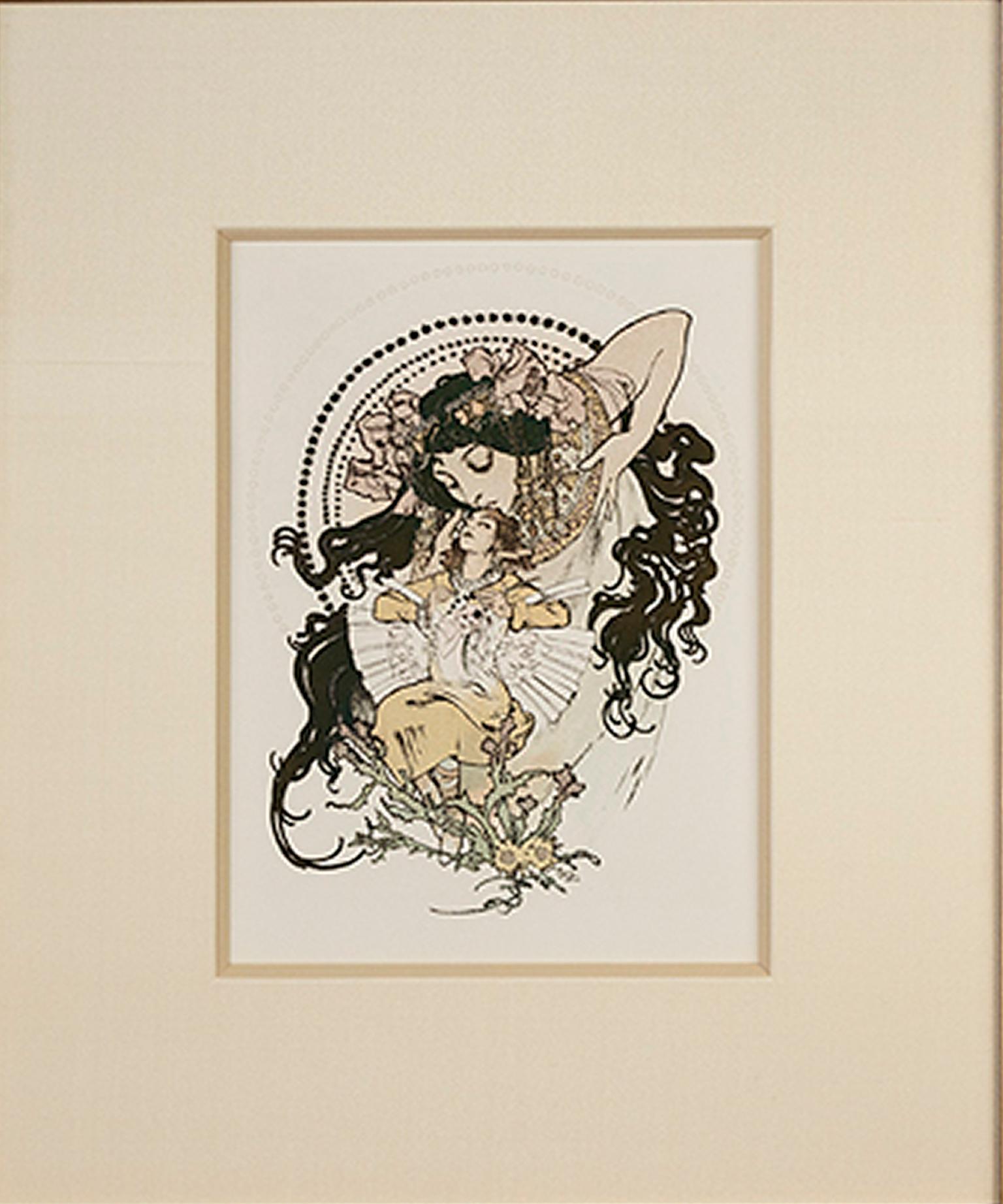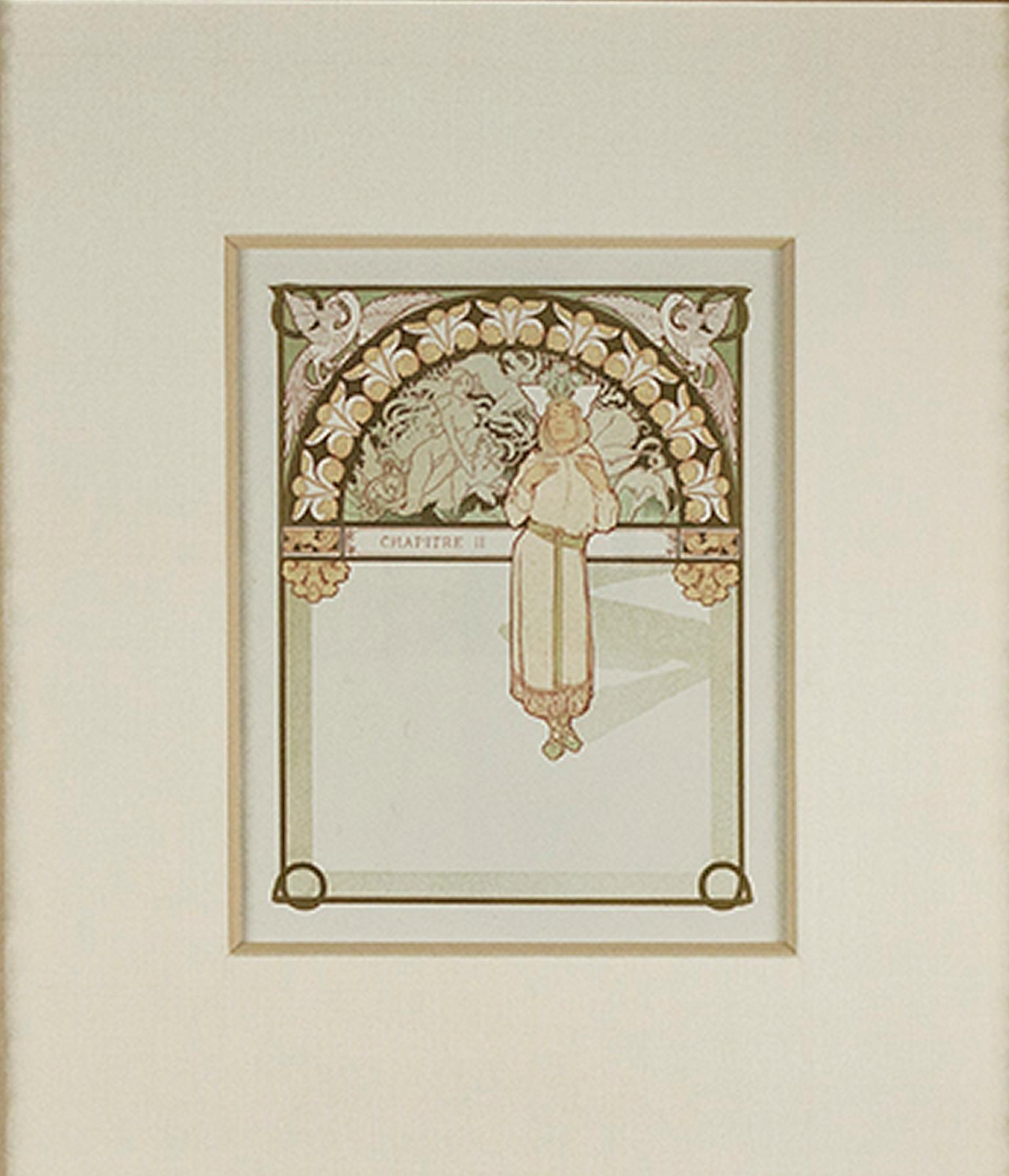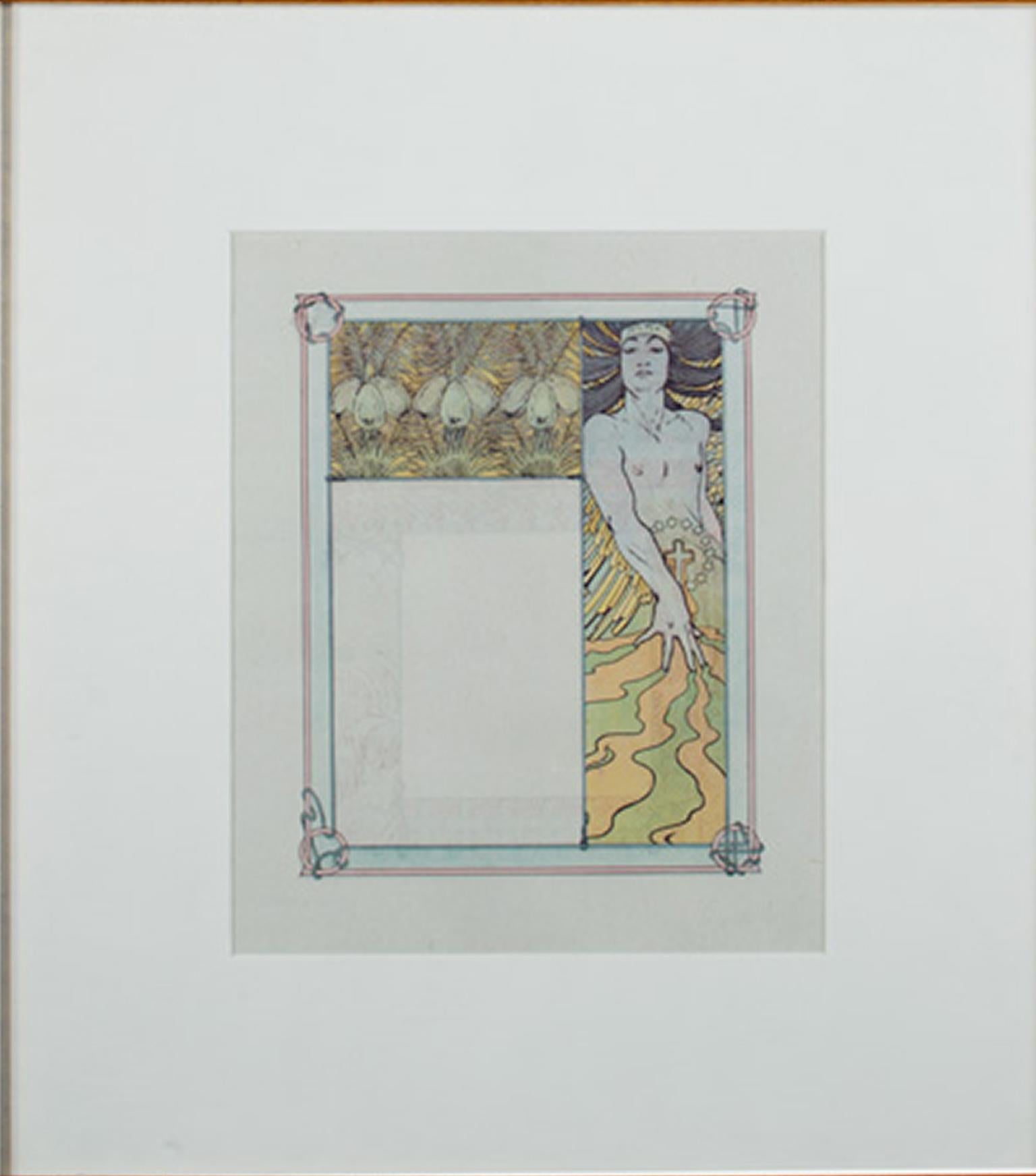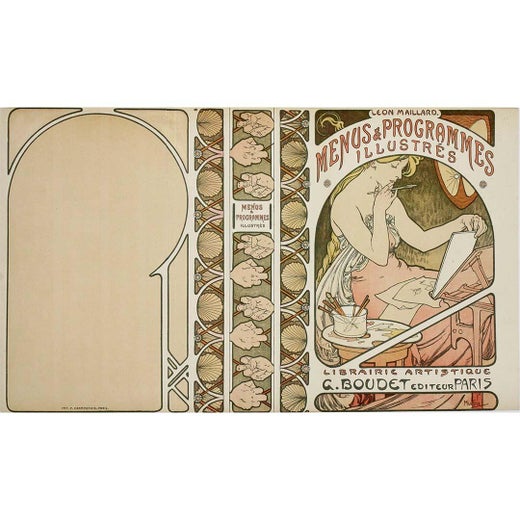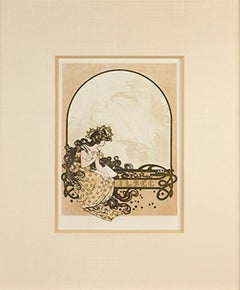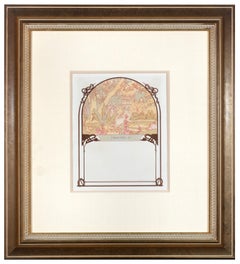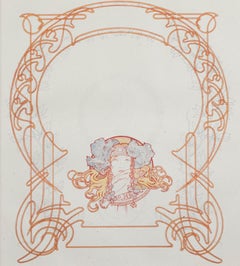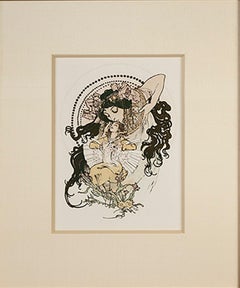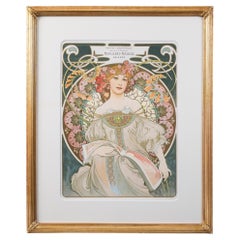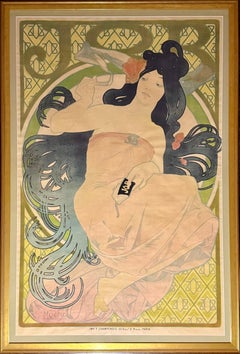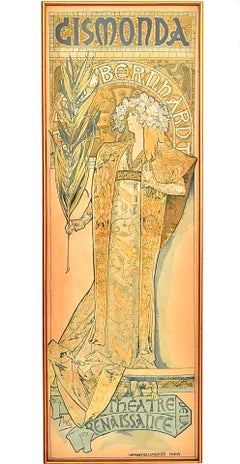Alphonse MuchaLate 19th century color lithograph art nouveau ornate bookplate female subject1897
1897
About the Item
- Creator:Alphonse Mucha (1860 - 1930, Czech)
- Creation Year:1897
- Dimensions:Height: 20.75 in (52.71 cm)Width: 17.5 in (44.45 cm)
- Medium:
- Movement & Style:
- Period:
- Condition:
- Gallery Location:Milwaukee, WI
- Reference Number:Seller: 13630g1stDibs: LU60531934363
Alphonse Mucha
Alphonse Mucha is acclaimed for his distinctly stylized and decorative Art Nouveau illustrated posters and prints — particularly those depicting beautiful French actress and famous artists’ muse Sarah Bernhardt. His work remains widely loved by everyone from bohemian students to serious collectors.
Mucha and his contemporaries treated femininity as the antidote to the impersonal, masculine world of the industrial revolution — it was to be celebrated and embraced. He fervently believed that art is a crucial, enjoyable benefit to humankind, and it should be accessible to as many people as possible.
Mucha showed an early talent for drawing. Rejected when he applied to the Academy of Fine Arts in Prague in 1878, he traveled to Vienna — two years later at the age of 19 — and found work painting theater backdrops. After a tragic fire that destroyed the theater that employed him, he returned home and began painting portraits. Count Eduard Khuen Belasi hired Mucha to paint a series of murals for his residence.
In 1885, the Count sent Mucha to the Munich Academy of Fine Arts — paying his tuition and living expenses. Mucha moved to Paris in 1888 to continue his studies, where he shared a studio with Paul Gauguin. There, he became enamored with the nude female form and allegorical studies. He enjoyed some financial success with magazine illustration work, which led to lucrative book illustration commissions. One of Mucha’s illustrations for the book Scenes and Episodes of German History received a medal of honor at the 1894 Paris Salon of Artists.
In 1894, Mucha began a six-year contract for the acclaimed stage actress Sarah Bernhardt, creating posters for her shows and tours. His first poster was an immediate sensation and cemented his fame in the Art Nouveau poster artist community.
Mucha designed some of the most famous posters of the era — a time when these works were key to the fabric of the cosmopolitan thoroughfare in the French capital. He created advertisements for JOB cigarette papers, Ruinart champagne, Lefèvre-Utile biscuits and Moët-Chandon champagne. Although Mucha is renowned for his posters, he spent the latter half of his life on decorative panel works and Czech nationalist artworks — many of them in the collection at the Mucha Museum in Prague.
Find original Alphonse Mucha nude prints, figurative prints, wall decorations and other art on 1stDibs.
- ShippingRetrieving quote...Shipping from: Milwaukee, WI
- Return Policy
More From This Seller
View All1890s Art Nouveau Figurative Prints
Lithograph
1890s Art Nouveau Landscape Prints
Lithograph
1890s Art Nouveau Portrait Prints
Lithograph
1890s Art Nouveau Figurative Prints
Lithograph
1890s Art Nouveau Figurative Prints
Lithograph
1890s Art Nouveau Figurative Prints
Lithograph
You May Also Like
Early 1900s Art Nouveau Prints and Multiples
Lithograph
Antique Late 19th Century French Art Nouveau Prints
Paper
1890s Art Nouveau Figurative Prints
Ink, Archival Paper
1890s Art Nouveau Figurative Prints
Archival Paper
1890s Art Nouveau Figurative Prints
Lithograph
Antique Late 19th Century French Art Nouveau Drawings
Paper
